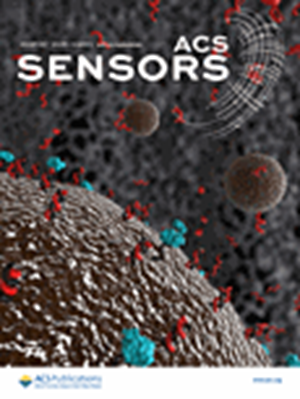Robust Odor Detection in Electronic Nose Using Transfer-Learning Powered Scentformer Model
IF 8.2
1区 化学
Q1 CHEMISTRY, ANALYTICAL
引用次数: 0
Abstract
Mimicking the olfactory system of humans, the use of electronic noses (E-noses) for the detection of odors in nature has become a hot research topic. This study presents a novel E-nose based on deep learning architecture called Scentformer, which addresses the limitations of the current E-nose like a narrow detection range and limited generalizability across different scenarios. Armed with a self-adaptive data down-sampling method, the E-nose is capable of detecting 55 different natural odors with the classification accuracy of 99.94%, and the model embedded in the E-nose is analyzed using Shapley Additive exPlanations analysis, providing a quantitative interpretation of the E-nose performance. Furthermore, leveraging Scentformer’s transfer learning ability, the E-nose efficiently adapts to new odors and gases. Rather than retraining all layers of the model on the new odor data set, only the fully connected layers need to be trained for the pretrained model. Using only 1‰ data of the retrained model, the pretrained model-based E-nose can also achieve classification accuracies of 99.14% across various odor and gas concentrations. This provides a robust approach to the detection of diverse direct current signals in real-world applications.

基于迁移学习驱动Scentformer模型的电子鼻鲁棒气味检测
电子鼻模仿人类的嗅觉系统,利用电子鼻检测自然界的气味已成为一个热门的研究课题。本研究提出了一种基于深度学习架构的新型电子鼻,称为Scentformer,它解决了当前电子鼻的局限性,如检测范围窄和在不同场景下的有限泛化性。采用自适应数据下采样方法,电子鼻能够检测55种不同的自然气味,分类准确率达到99.94%,并使用Shapley加性解释分析对电子鼻中嵌入的模型进行分析,为电子鼻的性能提供了定量解释。此外,利用Scentformer的迁移学习能力,电子鼻可以有效地适应新的气味和气体。而不是在新的气味数据集上重新训练模型的所有层,只需要为预训练的模型训练完全连接的层。仅使用再训练模型的1‰数据,基于预训练模型的电子鼻在不同气味和气体浓度下的分类准确率也达到99.14%。这为在实际应用中检测各种直流信号提供了一种可靠的方法。
本文章由计算机程序翻译,如有差异,请以英文原文为准。
求助全文
约1分钟内获得全文
求助全文
来源期刊

ACS Sensors
Chemical Engineering-Bioengineering
CiteScore
14.50
自引率
3.40%
发文量
372
期刊介绍:
ACS Sensors is a peer-reviewed research journal that focuses on the dissemination of new and original knowledge in the field of sensor science, particularly those that selectively sense chemical or biological species or processes. The journal covers a broad range of topics, including but not limited to biosensors, chemical sensors, gas sensors, intracellular sensors, single molecule sensors, cell chips, and microfluidic devices. It aims to publish articles that address conceptual advances in sensing technology applicable to various types of analytes or application papers that report on the use of existing sensing concepts in new ways or for new analytes.
 求助内容:
求助内容: 应助结果提醒方式:
应助结果提醒方式:


